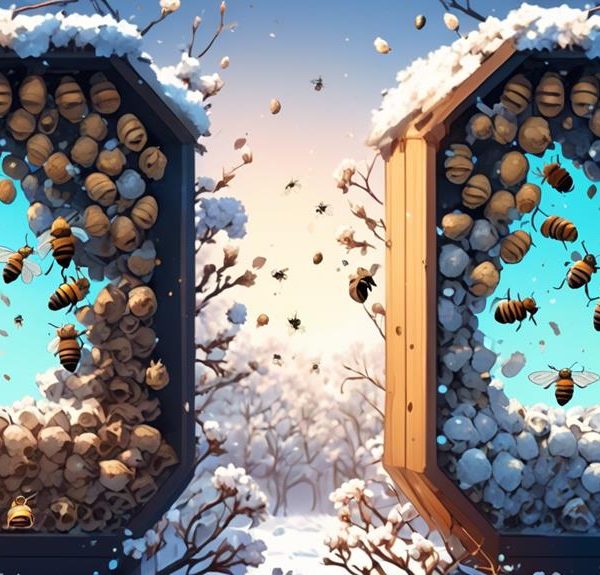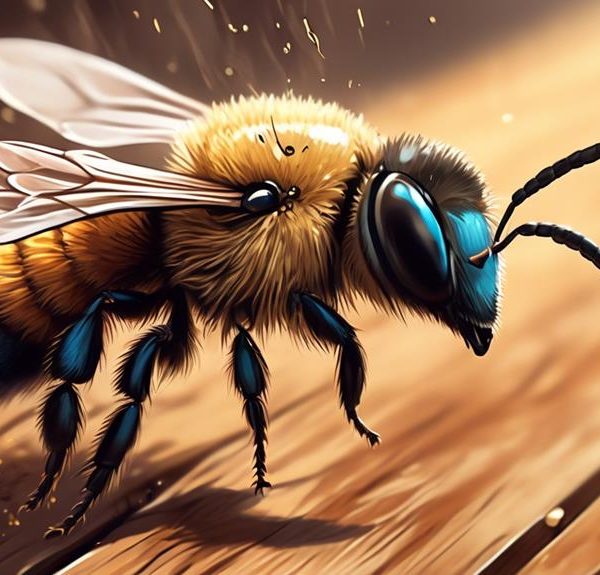Keeping Mason bees? Discover the effectiveness of Mason bee hive houses in supporting these tiny, yet highly efficient pollinators.

Do Mason Bee Hive Houses Work?
Did you know that Mason bees can pollinate up to 100 times more flowers in a day than honeybees? That's right, you've heard it correctly.
Now, you might be wondering, if these tiny creatures are such efficient workers, how well do Mason bee hive houses actually function? Are they really effective in providing a habitat for these little pollinators?
While many gardeners and hobbyists swear by the effectiveness of these bee houses, others still remain skeptical.
Stick around, as we're about to explore the fascinating world of Mason bees and their hive houses – a journey that will hopefully shed some light on this intriguing topic.
Key Takeaways
- Mason bee hive houses provide a safe space for solitary Mason bees to lay their eggs and promote their population.
- Mason bees are exceptional pollinators, outperforming other bee species, and play a critical role in maintaining biodiversity and enhancing crop yields.
- Hive houses are easy to manage, require minimal maintenance, and are cost-effective.
- Crafted hive houses should be placed in a sunny, south-facing location protected from wind and rain, with regular maintenance and patience needed for optimal results.
Understanding Mason Bee Hive Houses
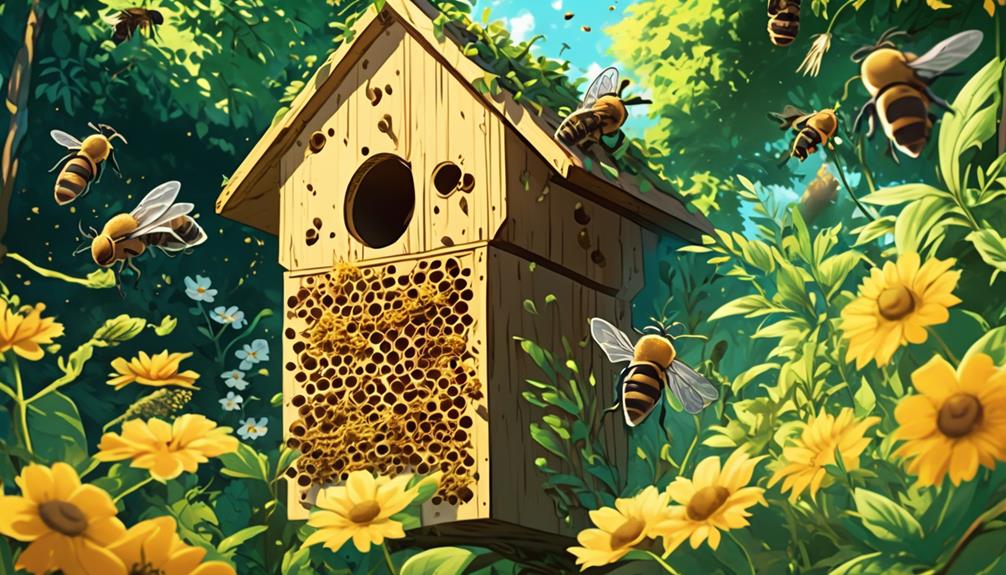
To fully appreciate the effectiveness of Mason bee hive houses, you need to understand their unique design and purpose. Unlike honeybees, Mason bees are solitary creatures. They don't live in colonies, nor do they produce honey. What they're known for, however, is their exceptional pollination skills, making them invaluable to agriculture and gardens.
This is where Mason bee hive houses come into play. They offer a safe space for these bees to lay their eggs, therefore encouraging their proliferation. Each hive house is composed of numerous small tubes, mimicking the natural cavities Mason bees seek out for nesting. They're filled with mud, hence the name 'Mason.'
But do these hive houses work? The answer is a resounding yes. They've been proven to attract Mason bees, hence promoting their population. By providing them with a readily available nesting ground, you're not only aiding in their conservation but also benefiting from their pollination prowess.
However, it's essential to place these houses in the right location and maintain them well for optimal results. Understanding these details will help you appreciate and utilize Mason bee hive houses effectively.
Benefits of Mason Bee Hive Houses
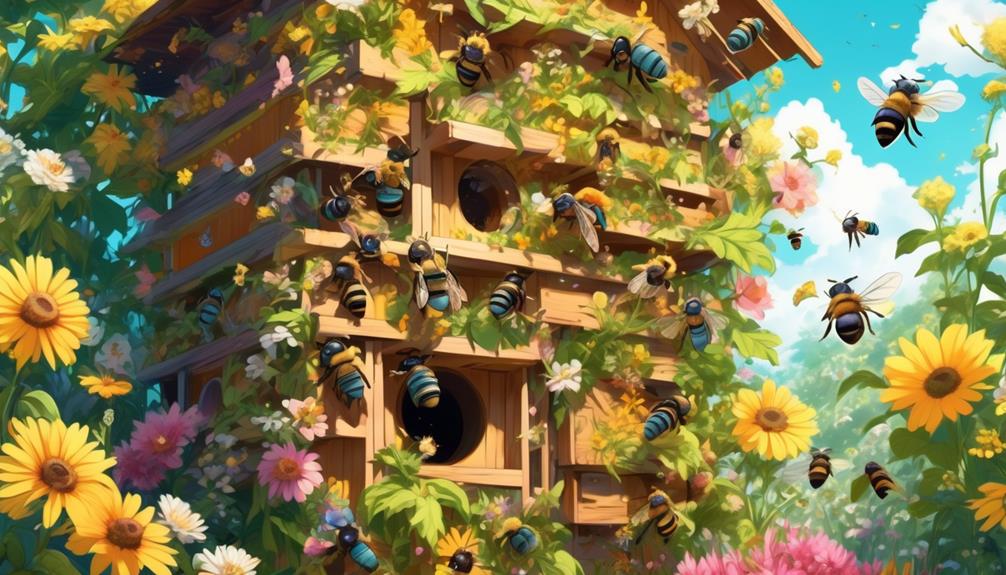
Harnessing the power of Mason bee hive houses can deliver a plethora of benefits, not only to the bees themselves but also to your garden and the broader ecosystem. These tiny powerhouses are exceptional pollinators, outperforming other bee species by a significant margin. They're solitary bees, meaning they're less likely to sting unless severely provoked, so you can enjoy your garden in peace.
Mason bees play a critical role in maintaining and enhancing biodiversity, pollinating a wide variety of plants. This, in turn, supports an array of wildlife, from birds to mammals. Your garden will thrive as these bees pollinate your flowers, fruits, and vegetables, leading to higher yields and better quality produce.
Moreover, Mason bee hive houses are easy to manage and require minimal maintenance. You don't need to invest in expensive equipment or spend hours maintaining the hive. It's an eco-friendly and cost-effective solution to boosting the health of your garden and supporting local ecosystems.
Lastly, by providing a home for these bees, you're supporting their survival. Mason bees face numerous threats, from habitat loss to climate change. A hive house offers them a safe haven, contributing to their conservation and the health of our planet.
Drawbacks of Mason Bee Hive Houses

While Mason bee hive houses certainly offer numerous advantages, it's important to also consider some potential drawbacks that may arise.
One of the main concerns is the increased risk of disease and parasites. Since the bees are concentrated in one area, it's easier for pests and diseases to spread.
You're also likely to face the challenge of ensuring the hive remains in ideal conditions. If it's too hot, cold, or damp, the bees may not thrive.
Another downside is that these houses require regular maintenance. You'll need to clean the tubes or blocks regularly to prevent the buildup of mites and fungi. Neglecting this task can lead to unhealthy bees and a less productive hive.
Lastly, remember that not all bees are guaranteed to use the hive house. Even if you provide the perfect conditions, some bees may simply prefer to nest elsewhere.
Crafting Effective Mason Bee Hive Houses
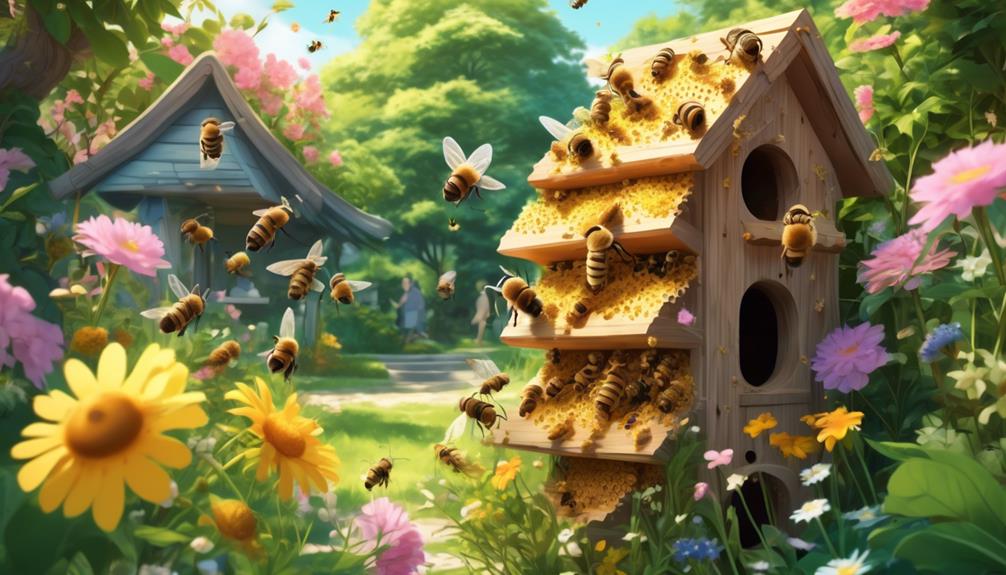
Despite the challenges, you can craft an effective Mason bee hive house with careful planning and regular maintenance, greatly enhancing the productivity and health of your bees.
Start by choosing the right location. It should be a sunny, south-facing spot that's protected from wind and rain. The hive should be at least three feet off the ground to deter predators.
When constructing the house, use untreated wood and design it so that it has a roof for protection from weather elements. The tubes within the house should be 5/16 of an inch in diameter, which is the ideal size for Mason bees. They also need to be at least 6 inches deep to allow for enough cells to be laid.
Regular maintenance is crucial. Clean the tubes annually to prevent parasites and diseases. You can also reposition the hive house throughout the year to follow the sun's path, ensuring the bees always have enough warmth.
Lastly, patience is key. It might take a year or two for the bees to fully occupy the hive house. But with perseverance and proper care, you'll create a haven that bolsters your bees' health and productivity.
Real-Life Experiences With Mason Bee Hive Houses
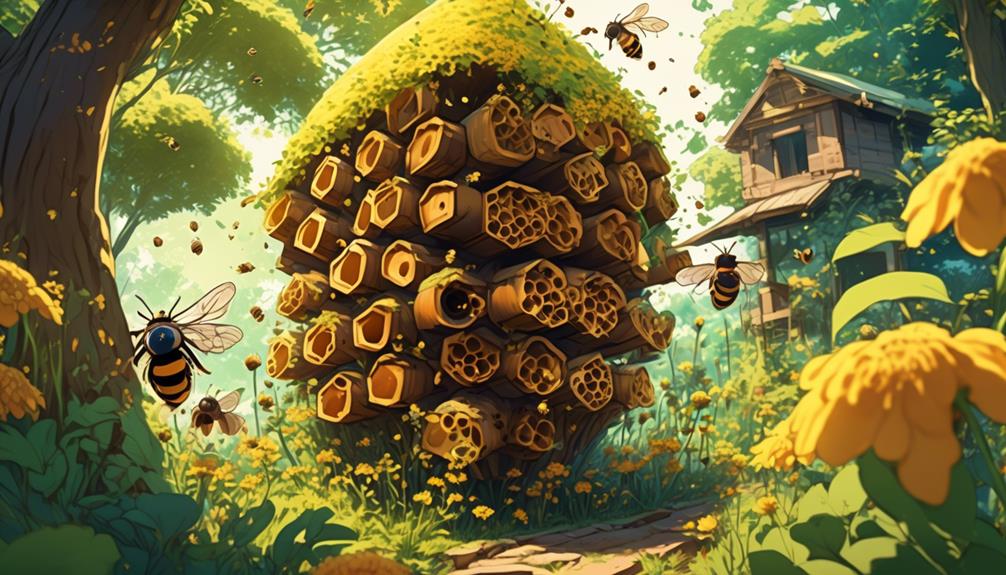
Over the years, many bee enthusiasts have shared fascinating real-life experiences with their Mason bee hive houses, shedding light on both the rewards and challenges of this endeavor. You'll find that these experiences vary, but they all contribute to our understanding of how these hive houses function.
Let's consider three particular instances, each with its unique situation and outcome.
User | Experience | Outcome |
|---|---|---|
John | Started with 50 bees, and the population expanded significantly. | Successful increase in bee population. |
Sarah | Struggled with pests invading the hive house. | Had to implement pest control measures. |
Mike | Could not attract enough bees to the hive house. | Made modifications to the house to make it more appealing. |
John's experience highlights the potential for population growth when conditions are right. Sarah's encounter reminds us of the constant threat of pests, and the need for proactive measures. Lastly, Mike's experience underscores the necessity of making the hive house attractive for the bees. Each of these experiences provides invaluable insights to help you navigate your own Mason bee hive house journey.
Conclusion
So, do mason bee hive houses work?
Absolutely, they do! They're beneficial to our environment, aiding in pollination.
Although they've a few downsides, like potential predators, these can be mitigated.
Crafting an effective hive house isn't tough and real-life experiences confirm their success.
Jump in, create your own hive house, and experience the joys and benefits of attracting these industrious, non-aggressive bees to your garden.
It's well worth the effort!

